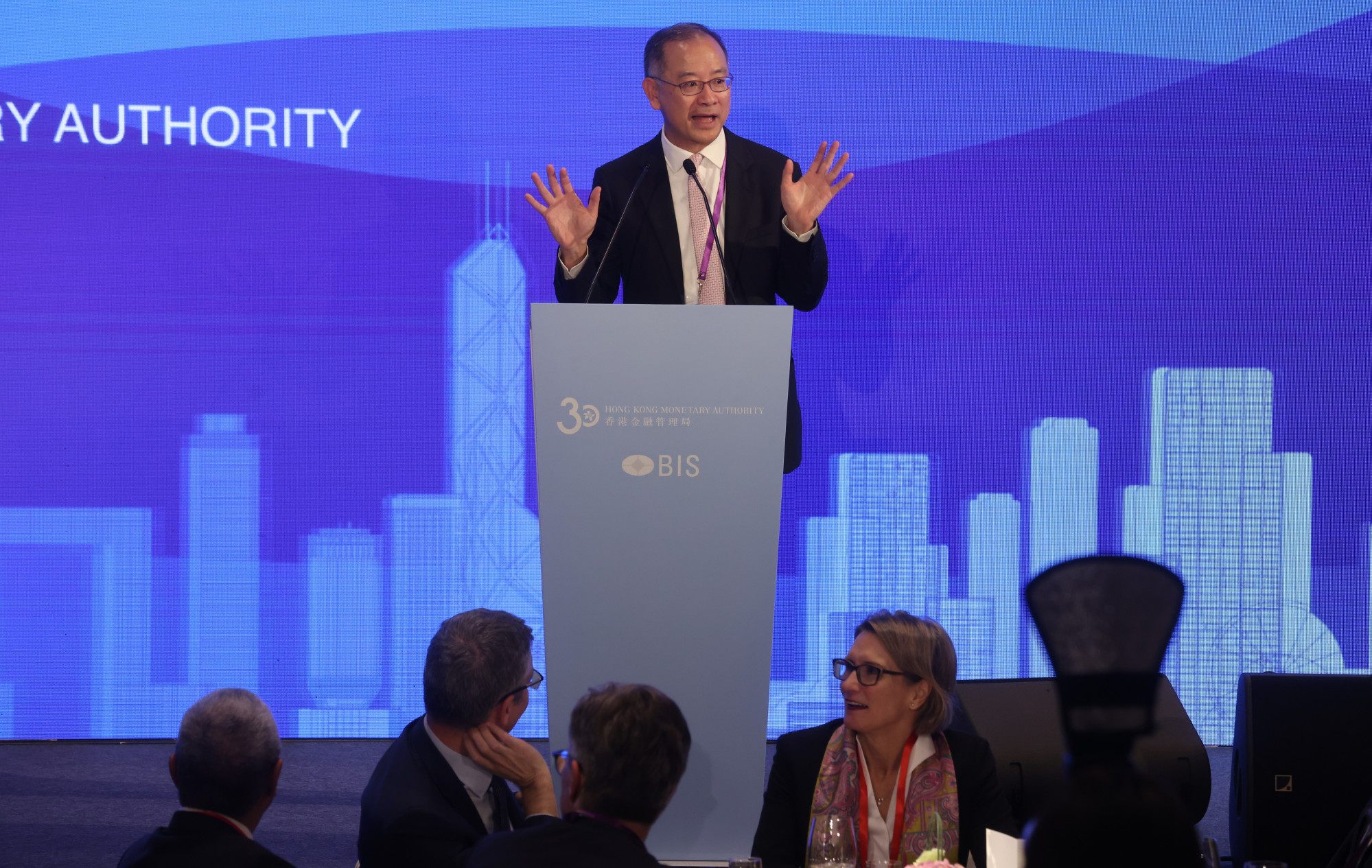“But it also means that Hong Kong needs to be more proactive in striving for our own development opportunities and injecting some momentum into our economy,” Yue said.
The issuance of green bonds and green loans in Hong Kong has risen from US$11 billion two years ago to more than US$80 billion in 2023, Yue said. More such bonds and loans will be issued in the future, he added.
Tokenising a note means recording the beneficial interests in a bond using distributed ledger technology, or blockchain, rather than through traditional computerised book entries.
E-CNY: HSBC, Standard Chartered jump on China’s digital currency bandwagon
E-CNY: HSBC, Standard Chartered jump on China’s digital currency bandwagon
The second tokenised green bonds are expected launch in the next few months, Yue said, and the HKMA will study carrying out the whole process – from derivation to recovery – on blockchain, so as to improve efficiency, or to incorporate Internet of Things technology to enhance transparency.
The one-year Hong Kong dollar-denominated tokenised green bonds in the second batch, priced at 4.05 per cent, will be offered to global institutional investors after virtual roadshows were arranged by the Bank of China (Hong Kong), Credit Agricole, Goldman Sachs and HSBC last week.

The HKMA and the Hong Kong government will organise a “Green Finance Week” in February, which will include a global climate business forum jointly organised with the World Bank’s International Finance Corporation, Yue said. It will bring together experts from all over the world to explore the transformation of green finance, and a round table discussion with the International Monetary Fund on blended finance, he added.
Yue highlighted that Hong Kong’s central bank digital currency (CBDC) project is recognised as the world’s most advanced.
China CBDC progress ‘on track’, finale ‘not very far away’: ex-head of PBOC
China CBDC progress ‘on track’, finale ‘not very far away’: ex-head of PBOC
The project will launch a minimum viable product in the first half of next year with the hope that after the implementation of the product, more central banks will join.
The four central banks in the trial will work out important policy issues, such as governance and liquidity provisions, and aim to launch the minimum viable product in the middle of next year, Yue told the Post in October. The 20 central banks from Asia, Europe, the Middle East, the Americas and Africa that are observing the scheme can jump in and join it at launch.
Yue said that in recent years the HKMA has been focusing on three main areas of development: tapping opportunities in mainland China, green finance and financial technology.
“And the HKMA will continue to work on these three areas, as they will provide many opportunities for Hong Kong.”

